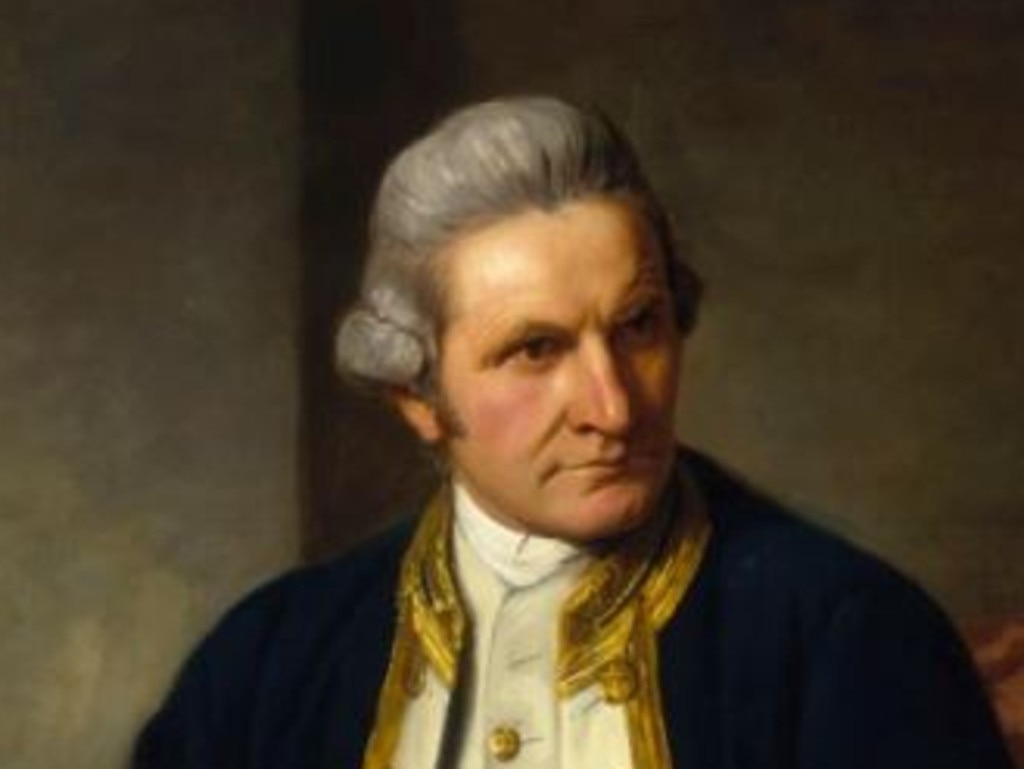
-
There’s a ripping sailor’s yarn Dr Nigel Erskine tells about how the Australian government’s strikingly accurate Endeavour replica found its way to the wharves outside his office at the Australian National Maritime Museum in Darling Harbour, Sydney.
She launched in 1993 with some 30km of real-life rigging. She boasts 750 wood blocks and pulleys. Her masts and spars carry 28 sails spreading to 930sq m in canvas. She feels so real you step cautiously into her Great Cabin and swear you can hear Cook’s footsteps pacing around Banks’ crowded specimen table. She has sailed more than 170,000 nautical miles, and twice around the world.
In 2005, ownership of her was transferred from the HM Bark Endeavour Foundation to the Australian National Maritime Museum. To celebrate the handover, Dr Erskine, the museum’s head of research, joined the then arts minister Rod Kemp, who had been instrumental in the handover, on the last leg of a triumphant global voyage she made from England through the Pacific and home to Sydney.
“I sailed on the vessel from New Zealand back to Sydney Harbour,” Erskine says.
Like all on board — dignitaries, historians, politicians — Erskine and Kemp were eagerly anticipating the replica’s brief stop at Kurnell, on the south eastern headland of Botany Bay, where, on April 29, 1770, Lieutenant James Cook first stepped on to Australian soil.
“The idea was that we were going to swing past the Kurnell site and fire off the guns as a salute and carry on up to Sydney Harbour,” Erskine says.
“But, interestingly enough, there’s a particular rock in the waters off Kurnell which Cook actually put on his chart.”
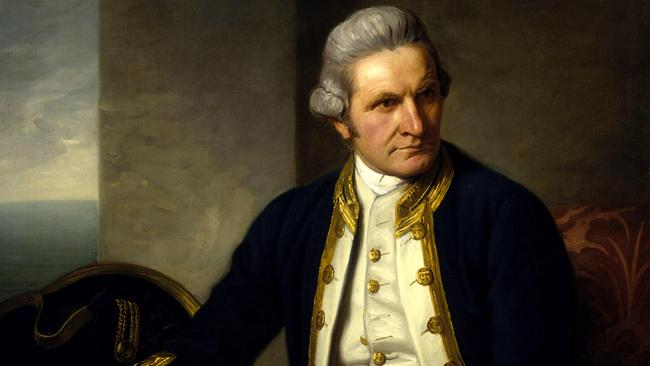
The brilliant navigator had safely negotiated the menacing and large outcrop of rock and had dutifully and accurately charted it for the benefit of sailors arriving at and departing Botany Bay in his wake. “But, somehow, the pilot who we had on board managed to put the boat on to the rock!” Erskine laughs, still flabbergasted.
The replica ship had fired her cannons in triumph then sailed fewer than 100m before coming to a rude halt, running aground on the troublesome hazard.
“So we were stuck there for about four hours and we did a bit of damage to the vessel; the keel was ripped off.”
Four local tug boats had to pull the boat to freedom.
“I most sincerely apologise for ruining your day,” the most unlucky Captain Chris Blake told his passengers.
“Of course, this is the last thing minister Kemp wanted to have broadcast all over the place with helicopters flying above,” Erskine says. “His day turned fairly black. But I always thought it was ironic that we struck this rock that Cook, the first European to survey that coast, had carefully noted on his map in 1770. And we managed to strike it in 2005.”
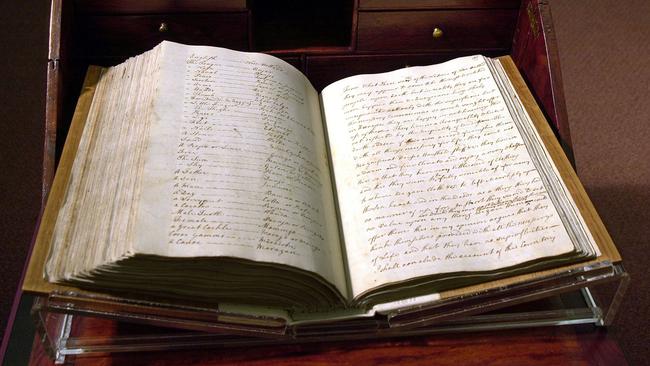
The moral of the story?
“Cook didn’t get the Endeavour voyage by accident,” says Martin Woods, curator of maps, National Library of Australia.
“He got it by being the best. He could navigate by the stars better than anybody else. People followed Cook into the Pacific. Cook teaches Bligh. Bligh teaches Flinders and so on. Cook opens up a completely different world. And when you’re talking about that, it’s the opposite world. A whole other side of the world.”
■ ■ ■
New Holland is more mountainous than the captain first anticipates. The Dutch described the western side of this mighty land mass as barren. The eastern side shimmers with high and low green country; dramatic capes and headlands that light up at night with the glowing red fires of natives.
“Cook’s up on deck,” says Erskine. “Anytime the vessel is that close to shore he’s concerned about striking rock. And from the time they first sighted land on April 19, there’s been a high level of interest. From a professional point of view, he had a huge opportunity in front of him.
“The west and north coasts, and some of the south coast, had been mapped. He was going to complete the jigsaw puzzle by mapping the east coast.”
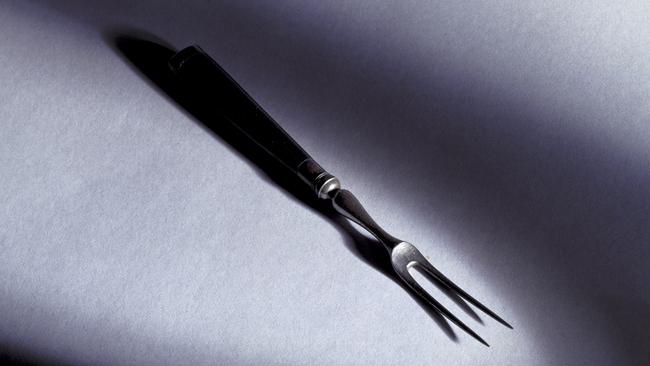
On the morning of April 29, 1770, a sheltered bay comes into view, enough water in front of it for Cook to anchor.
“When they finally enter Botany Bay, Cook drops a launch off,” says Erskine. “The launch goes in, says, ‘Yes, there’s enough water and it’s okay to come in’, and so the Endeavour follows it in and they do see indigenous people fishing along the shoreline.
“Banks makes the point that the indigenous people make no point of recognition. They don’t wave. They don’t run away. They don’t look surprised. They actually ignore the vessel completely and that’s a really interesting thing. I don’t know, from an indigenous point of view, what the explanation of that is, whether it was simply too foreign to their knowledge of the world that they simply didn’t register it, or they thought it was a God appearing, or maybe something they did not want to know about, I don’t know. It’s not until Cook and his men are in the pinnace and rowing ashore that there’s a reaction from the indigenous people.”
Young Isaac Smith is honoured. His uncle, James, invites him to join him on the lead pinnace of a three-boat landing party comprising 30 to 40 men. Smith takes his seat in the crowded pinnace, amid Joseph Banks and the brilliant Swedish naturalist Daniel Solander, whose name will be immortalised by the “solander box” notes and specimen cases lining shelves in public libraries across the modern world. What happens next will be debated for centuries by historians, but one popular telling says the boats reach a flat rock at what is now the Kurnell landing site and Cook steps to the edge of the pinnace, about to place the first European foot on eastern Australia, when he realises the gravity of the moment and turns to his young and loyal nephew. “Isaac,” he says. “You shall land first.”
If young Isaac lives through this risky landing, he’ll have one hell of a story to tell his family about how he spent his 18th year on Earth.
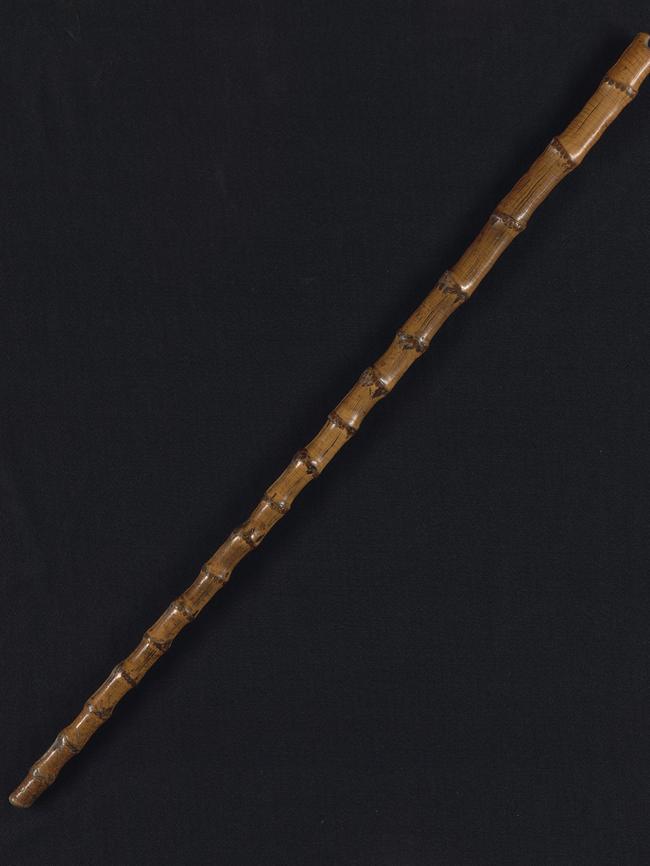
Cautious Cook — still reeling and gut reactive from dangerous encounters in New Zealand — spots natives and native huts on both points of the bay. On shore, two spear-carrying natives, an older man and a younger man, approach the edge of the Kurnell waters, urging these strange travellers, in their native tongue, to row on back to their giant wood home on the sea.
Cook writes: “We then threw them some nails beds a shore which they took up and seem’d not ill pleased with in so much that I thought that they beckon’d to us to come a shore but in this we were mistaken for as soon as we put the boat in they again came to oppose us, upon which I fired a musket between the two which had no other effect than to make them retire back where bundles of their darts lay and one of them took up a stone and threw at us which caused my firing a second Musquet load with small shott and although’ some of the shott struck the man yet it had no other effect than to make him lay hold of a Shield or target to defend himself. Emmediatly after this we landed which we had no sooner done than they throw’d two darts at us this obliged me to fire a third shott soon after which they both made off, but not in such haste but what we might have taken one, but Mr Banks being of opinion that the darts were poisoned made me cautious how I advanced into the woods.”
The cold welcome, says Erskine, should have been expected.
“That’s not strange, basically, within indigenous country,” he says. “If you were going to cross into somebody else’s country, you basically had to make arrangements. You had to negotiate with the other group to do that. Cook, of course, hadn’t made any negotiation whatsoever and so it was completely normal that the indigenous people should repel him. They see it as being incredibly impolite by rocking up on to their space and jumping ashore and it’s unfortunate that in the first instance when Cook and his men are threatened with spears that they react with bird shot.”
“They’re a bit frightened,” says Michelle Hetherington, senior Cook historian, National Museum of Australia. “They’ve just come from New Zealand where they could have died several times. I think they’re in a state of constant expectation and exhaustion.
“They don’t understand the protocols and there are very clear protocols in indigenous cultures: ‘I am coming on to your land. I will wait to be invited. I will bring you a gift. I will show proper respect’. And, of course, the English, they’re conquering the world. What do they know about proper respect to indigenous people? Nails were currency in Tahiti. You could get a number of things if you had a nail in Tahiti. They thought all of the people in the Pacific would be the same. But Australia was completely different. They didn’t have the same languages, they didn’t have the same set of cultural practises.”
But, says Hetherington, it would be folly to read recklessness into Cook’s management of a single moment in time that would echo and ripple through 250 years of Australian life.
“He was famous for his noted compassion for the people he encountered, for not notably killing people,” she says.
His journal crackles with moments where he’s regretting the impact of Endeavour’s arrival on an island community, be it from unintended slights of native leaders or the possibility of his men spreading STDs to native women. The man who rarely shows his feelings shows feeling most of all for the strangers he encounters at sea.
“They were sensible and they were scientific,” says Martin Woods. “They would step on to the soil, understand the surroundings, measure it, meet the people, record that information. It’s hard to say if he could have done anything different.”
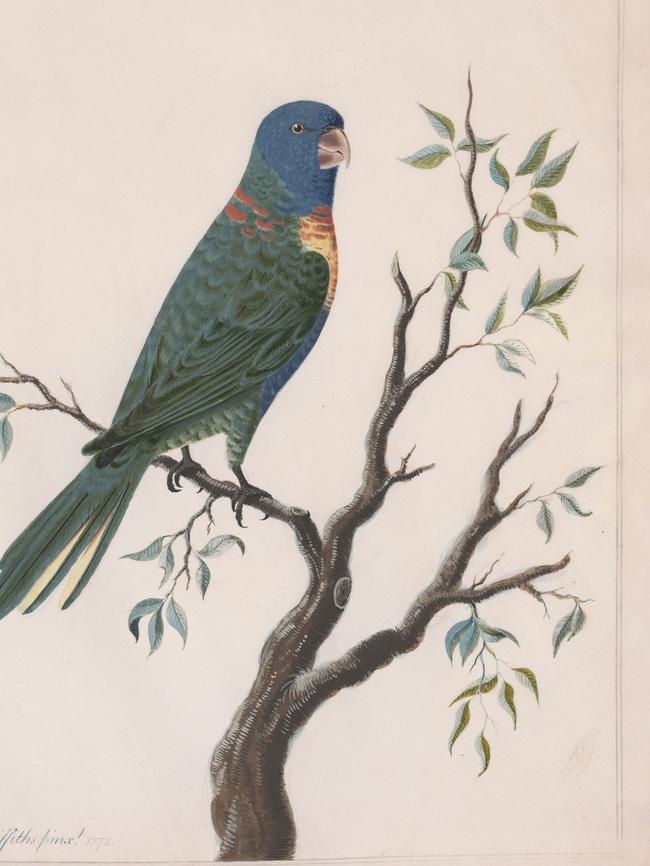
“But Cook’s not at all afraid to be truthful in his journal,” says Susannah Helman from the National Library of Australia. “He writes at one point, really poignantly, ‘all they seemed to want was for us to be gone’. He would report exactly the impression he got. To us, it’s the single most important moment in European discovery. To him, it was part of a very long management challenge that he was approaching the end of.”
Monday, 30th: As soon as the wonders and waterers were come on board to dinner 10 or 12 of the natives came to the watering place and took away their canoes that lay there but did not offer to touch any one of our Casks that had been left ashore and in the after noon 16 or 18 of them came boldly up to within 100 yards of our people at the watering place and there made a stand — Mr Hicks who was the officer ashore did all in his power to entice them to him by offering them presents but it was to no purpose all they seem’d to want was for us to be gone — after staying a short time they went away they were all arm’d with darts and wooden swords, the darts have each four prongs and pointed with fish bones and those we have seen seem to be intend more for striking fish than offensive weapons neither are they poisoned as we at first thought — After I had returns from sounding the bay I went over to a Cove on the south north side of the bay where in 3 or 4 hauls with the Saine we caught about 300 pounds weight of fish which I caused to be equally divided among the Ships Company — In the AM I went in the Pinnace to sound and explore the North side of the bay where I neither met with inhabitants or any thing remarkable.
History is built on Rashomon moments. Singular events, as in Akira Kurosawa’s 1950 Japanese film, are told by various characters with varying points of view.
Joseph Banks will write subtle differences into his journal about events on Botany Bay in April, 1770. His perceptive and contemplative artist friend, Sydney Parkinson, will add his own point of view.
Their countenance bespoke displeasure; they threatened us, and discovered hostile intentions, often crying to us, Warra warra wai. We made signs to them to be peaceable, and threw them some trinkets; but they kept aloof, and dared us to come on shore. We attempted to frighten them by firing off a gun loaded with small shot; but attempted it in vain. One of them repaired to a house immediately, and brought out a shield, of an oval figure, painted white in the middle, with two holes in it to see through, and also a wooden sword, and then they advanced boldly, gathering up stones as they came along, which they threw at us. After we had landed, they threw two of their lances at us; one of which fell between my feet. Our people fired again, and wounded one of them; at which they took the alarm and were very frantic and furious, shouting for assistance, calling Hala, half, mae; that is, (as we afterwards learned,) Come hither; while their wives and children set up a most horrid howl. We endeavoured to pacify them, but to no purpose, for they seemed implacable, and, at length, ran howling away, leaving their wives and children, who hid themselves in one of the huts behind a piece of bark. After looking about us a little while, we left some nails upon the spot and embarked, taking with us their weapons; and then proceeded to the other side of the bay, where we had seen a number of people, as we came in, round a fire, some of whom were painted white, having a streak round their thighs, two below their knees, one like a sash over their shoulders, which ran diagonally downwards, and another across their foreheads. Both men and women were quite naked, very lean and raw-boned; their complexion was dark, their hair black and frizzled, their heads unadorned, and the beards of the men bushy.
The firing of muskets and the wounding of natives, of course, is a clear contravention of the Admiralty’s instructions to “endeavour by all proper means to cultivate a friendship”.
“You are also with the Consent of the Natives to take Possession of Convenient Situations in the Country in the Name of the King of Great Britain,” the so-called secret instructions state.
Cook will indeed claim the land for Britain but not with the consent of the natives.
The Gweagal elders of Botany Bay don’t have quill and ink to record their version of events but they will recount them verbally and their perspectives will be passed down through ancestral lines that will lead them all the way to the doorsteps of the British Museum and Cambridge University where they will ask, in the year 2017, for the return of a sacred shield and spears taken aboard Endeavour by Cook’s men that fateful day on the Kurnell beach.
Erskine recently saw the sacred Gweagal shield, widely accepted to be the one removed from Kurnell on the day of first contact, up close at the British Museum on an Endeavour research trip. He says forensic studies of such artefacts could reveal deeper insights into the events of April 29, 1770.
“When you look at the shield, it’s got a hole in it which is about the perfect size for a musket ball,” he says. “I’ve always wondered when they say that they used small bird shot, whether that was actually really the case, or whether that wasn’t a bit of, after the event, smoothing things out. I mean, if you’re firing a half-inch musket ball at somebody you’re not mucking around. Whereas, a bit of bird shot and you hit (someone) they’re probably not gonna die. To me, it’s either a musket ball or it’s a knot in the timber that was used to make the shield. It’s a bit hard to tell. I think it would be worth somebody at the British Museum taking it to a science lab and looking for residue, looking for lead or something in the outer rim of that hole, because it could change a small point of view of our history.”
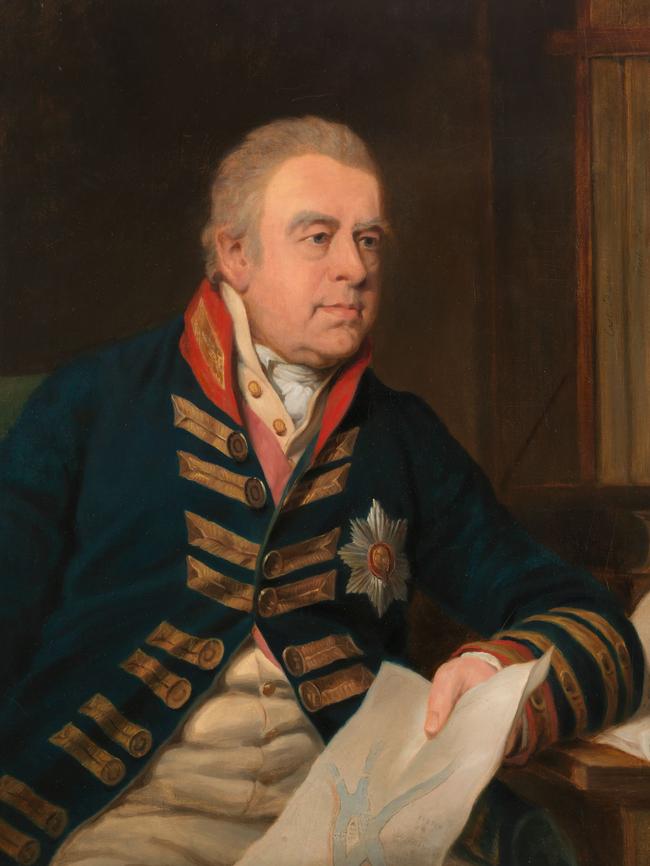
There’s a new way modern Cook scholars are viewing his first great voyage of discovery. It’s based around ideas of Australia’s late and eminent Pacific historian Greg Dening. “He talked about how you can’t understand an event if you only take one perspective,” Erskine says. “And he talked about the beach as being a place of neutrality that has both a view from the shore and a view from the water and that you need to combine these views on the beach. That’s what I hope this 250th anniversary will become.”
A place of neutrality.
■ ■ ■
The Endeavour anchors in Botany Bay for eight days. Repairs are made. Sails are laid out and patched on shore. Some men dive for fat succulent rock oysters. A midshipman shoots a parrot and offers it to an indigenous elder who recoils from the dead bird. Cook, meanwhile, wanders into scrub and writes of the country with awe.
The largest trees are as large or larger than our oaks in England and grows a good deal like them and yields a reddish gum. The wood itself is heavy, hard and black like Lignum Vitae another sort that grows tall and strait some thing like Pines the wood of this is hard and ponderous and something of the nature of American live oak, these two are all the timber trees I met with, there are a few sorts of Shrubs and several Palm trees, and Mangroves about the head of the harbour — the Country is woody low and flat as far inland as we could see and I believe that the soil is in general sandy, in the wood are a variety of very boutifull birds such as Cockatoo’s, Lorry quest, Parrots and Crows exactly like those we have in England — Water fowl are no less plenty about the head of the harbour where there are large flats of sand and Mud on which they seek their food. The most of these were unknown to us, one sort especially which was black and white and as large as a goose but most like a pelican. On the Sand and Mud banks are Oysters, Muscles, Cockles which I believe are the chief support of the inhabitants who go into shoald water with their little canoes and pick them out of the sand and Mud with their hands and sometimes roast and eat them in the Canoe, having often a fire for that purpose as I suppose for I know no other it can be for. The Natives do not appear to be numerous neither do they seem to live in large bodies but dispers’d in small parties along by the water side. Those I saw were about as tall as Europeans of a very dark brown colour but not black nor had they wooly frizled hair, but black and lank much like ours — no sort of cloathing or ornaments were ever seen by any of us upon any one of them or in or about any of their huts from which I conclude that they never wear any — some that we saw had their faces and bodies painted with a sort of white paint or pigment. Altho I have said that shell fish is their chief support yet they catch other sorts of fish, some of which we found roasting on the fire the first time we landed, some of these they strike with gigs and others they catch with hook and line … However we could know but very little of their customs as we never were able to form any connections with them, they had not so much as touch’d the things we had left in their hutts on purpose for them to take away.
Forby Sutherland dies of consumption on the night of April 30. Writes Cook: “… his body was buried a shore at the watering place which occasioned my calling the south point of this Bay after his name”. The men see kangaroo and dingo droppings. Cook sees promise in this land. “In many places a deep black soil which we thought was capable of producing any kind of grain, at present it produceth besides timber as fine meadow as ever was seen,” he writes.
Banks and Solander collect so many bizarre and wondrous new plants the great captain is moved to name this glorious, if uneasy, landing place Botany Bay. The English colours have flapped on shore since arrival but, “having seen everything this place afforded”, Cook decides to sail further north along this new and rich east coast of New Holland. He instructs a crewman to carve an inscription into a tree by a well-used watering place, some sign to say they were here. The crewman carves the date of their stay beside a word the Macquarie Dictionary for Australian English defines as “to exert oneself to do or effect something; make an effort; strive”. He carves the word “Endeavour”.
TOMORROW: PART III
THE VIEW FROM THE SHORE
Return to the Cook Endeavour series page here



